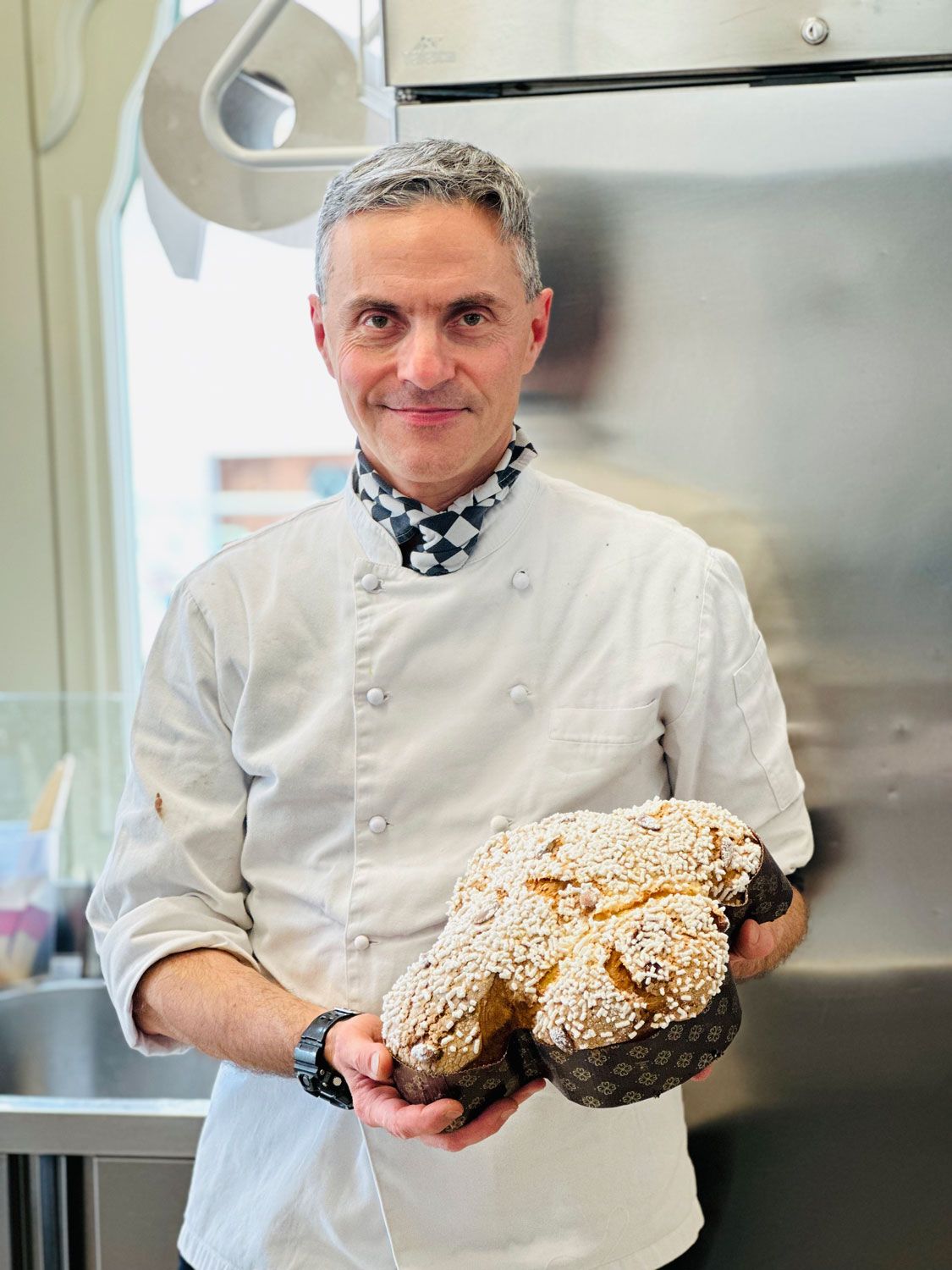- Experience (4)
- Menu (15)
- News (1)
- Pairings (2)
- Surroundings (2)
- Sustainability (3)
- Vegetarian (4)
- Wine (2)
The Easter dove: between Lombardy and Veneto
La Fenice has been experimenting with a balanced dough for more than ten years now balanced for its leavened products: the Easter Colomba and the Christmas Veneziana. In both cases are two traditional desserts, consumed during the two holidays most important of the year: Easter and Christmas. Alongside the traditional product, the same every year, which contains soft and fragrant Armogiana apricots candied and pitted by hand, a special edition is produced every year always different and curious: an opportunity to try new combinations and refresh your palate with innovative flavors. But where does the Easter leavened product come from? dove-shaped?
It is known that the dove has become the reference par excellence of Easter pastry shop; however love, purity and peace are the key concepts that are found behind this Christian symbol. They were born around this dessert also many legends, which certainly partly reflect the history of its origin. However, this is what we like to convey with the artisanal Colomba of the Phoenix is that these principles translate into reality: loving every morsel of this very special and refined dessert, the result of very long experimentation and dedication; purity is expressed in its totally natural raw materials and finally peace, because our wish is that the sharing of this dessert traditional brings serenity to every family.

According to tradition, the Easter dove was born in Lombardy, in our region. Legend has it that, around 610, in what was the capital of the Lombards, Pavia, Queen Theodelinda hosted a group of Irish pilgrims, led by the famous Saint Colombano. The sovereign offered the guests a rich banquet, but the saint refused the offer because they were in Lent. Theodelinda and her husband Agilulf were very offended to see their generosity rejected and so it was that Saint Colombano decided to bless the rejected game banquet by transforming it into numerous doves of white bread.
A second version always has the center of the narrative in Lombard Pavia, but dates back to 572, during the government of King Alboin who waged war on the Byzantines by besieging the city. After three years the resistance was defeated and the barbarians finally entered the city. It was then that the locals decided to give the invaders some soft sweets in the shape of a dove, an undisputed symbol of peace, in an attempt to stem their war violence. A gesture that avoided the sacking of the city, which even became the capital of the kingdom.
A third Lombard version takes us to the battle of Legnano in 1176, in the late Middle Ages, when the newly created Municipalities of the Lombard League defeated Emperor Frederick Barbarossa. It is said that a leader saw two pigeons alight on the League’s insignia, unconcerned by the sounds of battle. To instill courage in his men, the leader had the chefs make dove-shaped bread, made from eggs, flour and yeast, reproducing that very shape as an apotropaic and lucky symbol. But a version of the colomba also exists in our neighboring region of Veneto, where the Christmas tradition of our Veneziana also comes from (as a variant of the classic Milanese panettone). It is a variant of fugassa, or focaccia (a term which, in the Serenissima of Venice, has always been associated with various types of desserts) with the addition of the shape of a dove. The ingredients, according to a precise specification to which our pastry shop adheres to maintain high quality standards, are: flour, sourdough starter, eggs, sugar, butter, honey, salt, vanilla, cocoa butter, almonds, hazelnuts, corn starch and candied fruit. All the ingredients are kneaded together several times, then the dough is left to rest for a long period, before proceeding with cooking and a further rest upside down for the final maturation of the artisanal product. The epicenter of focaccia and Venetian colomba is the famous city of Verona, not far from our Garda shores. The antiquity of the dove-shaped version of fugassa is more uncertain, but it seems that in Verona it already existed at the end of the 19th century as a common and traditional baked product for Easter.
If you would like to taste our artisanal Colomba for an all-round sensorial experience (smell it before biting into it, you will discover that your senses have something more to tell you about it!) in the classic version with Armogiana apricots or in the special edition “colomba egg” with wild strawberries and white chocolate, you can buy it directly in store or online from here: https://caffetteriapasticcerialafenice-onlineshop.it/products/la-colomba-della-fenice.
Share your experience with us on Instagram and Facebook channels!

-
Address: via Verona 69/71, Lugana di Sirmione, Bs.
-
Telephone: +39 030 919003
